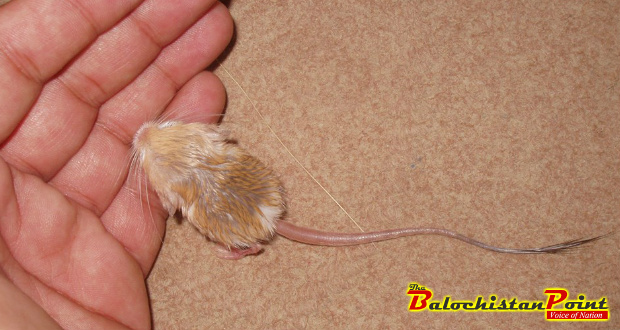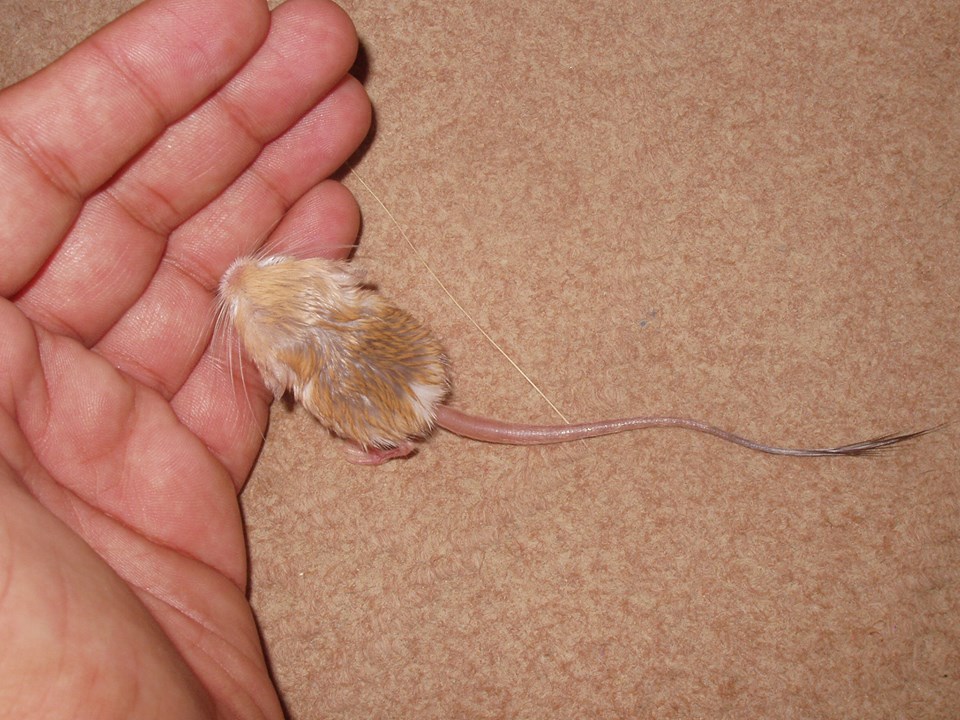Qais Baloch
 Baluchitherium is one of the largest land mammals ever existed, it was discovered by a French paleontologist Jean-Loup Welcomme in Dera Bugti district of Balochistan. Pygmy Jerboa mouse, which is equal to a coin in size, was first discovered by J.A Anderson in Chagai district of Balochistan.
Baluchitherium is one of the largest land mammals ever existed, it was discovered by a French paleontologist Jean-Loup Welcomme in Dera Bugti district of Balochistan. Pygmy Jerboa mouse, which is equal to a coin in size, was first discovered by J.A Anderson in Chagai district of Balochistan.
Pygmy Jerboa is the tiniest mouse in the world and is said to be found only in Balochistan. However, some other wildlife specialists claim to have found it in the deserts of Afghanistan, including Helmand, Kandahar and Nimroz situated in a geographically connected belt with Balochistan.
Apart from having world’s largest copper and gold reserves, Chagai district of Balochistan is also regarded as the home of unique wildlife such as Sand Cat, Pygmy, Sand Rabbit, Geckos, Leaf Nosed Viper and Houbara Bustard. Sadly, due to increased human activities in the area and lack of governmental patronage for the protection of wildlife in Balochistan these rare animals are under threat of extinction.
Pygmy Jerboa, the tiniest mouse in the world, is said to be found only in Balochistan.
The long legs of this tiny creature help it to leap high whenever chased by any predator. Its tail is to balance itself when raising its food to mouth with its little paws. It can dig about one meter long hole under small bushes, the hair on its paws enable it to run effortlessly without sinking in the sand dunes.
In 2010, Guinness Book of World Records listed Pygmy Jerboa along with the African Pygmy Mouse as the smallest mice in the world. Pygmy Jerboa is even smaller in dimensions and weight than African pygmy mouse.
The nutrition of Pygmy Jerboa consists of shoots of bush, stems, wind blow seeds and even typical insects. Jerboas don’t drink water and gets moisture from their foods.
In 2010 Guinness Book of World Records listed Pygmy Jerboa along with the African Pygmy Mouse as the smallest mice in the world.
Shuja Jan, a young wildlife specialist of sustainable Use Specialist Group Central (SUSG-C Asia) told this scribe that few years back Snake Charmers used to visit Chagai district for catching Pygmy Jerboa and some kinds of snakes.
“Pygmy Jerboa is also smuggled to other countries via Karachi and other main cities of Pakistan,” Shuja said.
“We (SUSG-C Asia) after knowing this started to prevent Snake Charmers catching this tiny creature. Besides our efforts we also created awareness among the people to protect this unique wildlife,” he added.
Pygmy Jerboa mouse has a high rate in Japan, Europe and some other countries. Its cost is estimated over $ 100 per couple. This mouse isn’t a pet animal, in spite of that there are several breeders who are willing to purchase this tiny creature which is against the laws of wildlife.
SUSG-C Asia is doing efforts to preserve, conserve and properly protect species and reptiles with the collaboration of Wildlife and Forest Department Government of Balochistan.
Unfortunately, World Wide Fund for Nature (WWF) and International Union for Conservation of Nature and Natural Resources (IUCN) are paying less attention towards protection of wildlife in Balochistan.
Naseeb Ullah Khan, Project Coordinator International Union for Conservation said his organization IUCN is currently focusing on other issues and paying less attention towards wildlife.
According to the website of the organization the IUCN has also put Pygmy Jerboa on Red List along with other endangered species. However, when the scribe contacted the officials of IUCN Balochistan Chapter about Pygmy Jerboa they were completely unaware about the importance and threats to this endangered animal. It was also noticed that the staff was very ill informed about wildlife in Balochistan.
IUCN has listed Pygmy Jerboa on Red List of endangered species.
“IUCN will launch a marine conservation project funded by the USAID in the coastal areas of Balochistan to save the endangered sea turtles which is not first marine conservation project attempted by IUCN since conservation of marine species like dolphins , whale and some migratory birds had been supervised previously in the area,” Mr Khan added.
Wildlife experts in Balochistan are of the view that Balochistan having a long territory with typical weather and eight different ecological zones is the hub of distinct species but unfortunately government and authorities concerned are paying no attention towards protection of wildlife in Balochistan.
They say government and concerned departments should take practical steps for the protection and preservation of wildlife as they are the assets of Balochistan.
Exclusive report
Published in The Balochistan Point on September 4, 2015
 Balochistan Point Voice of Nation
Balochistan Point Voice of Nation





